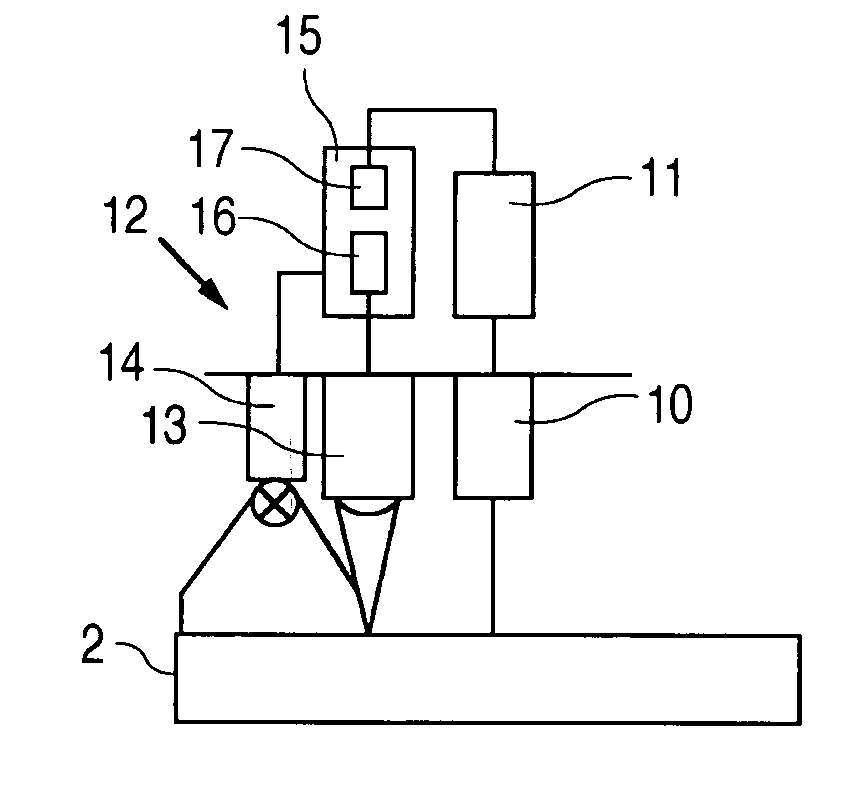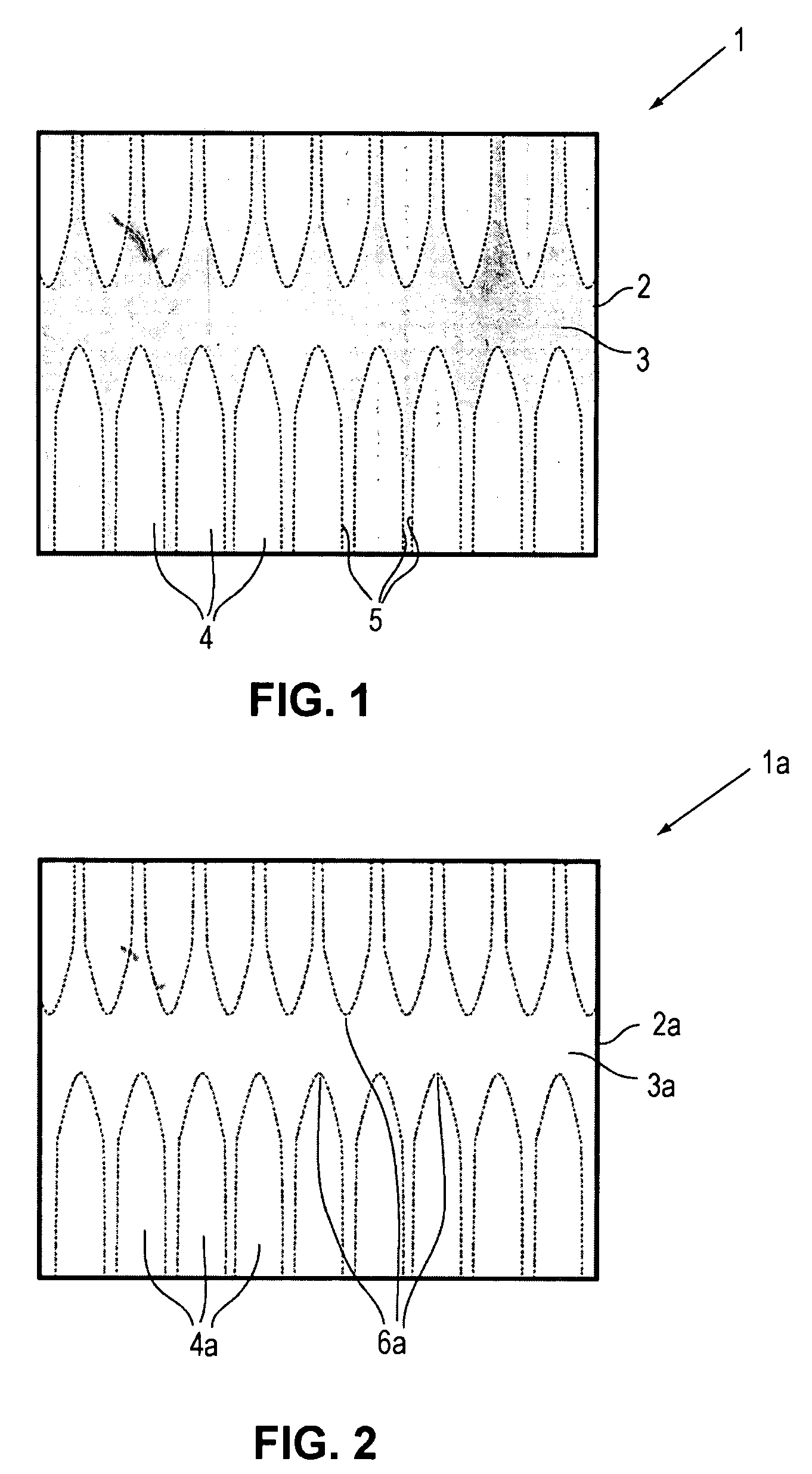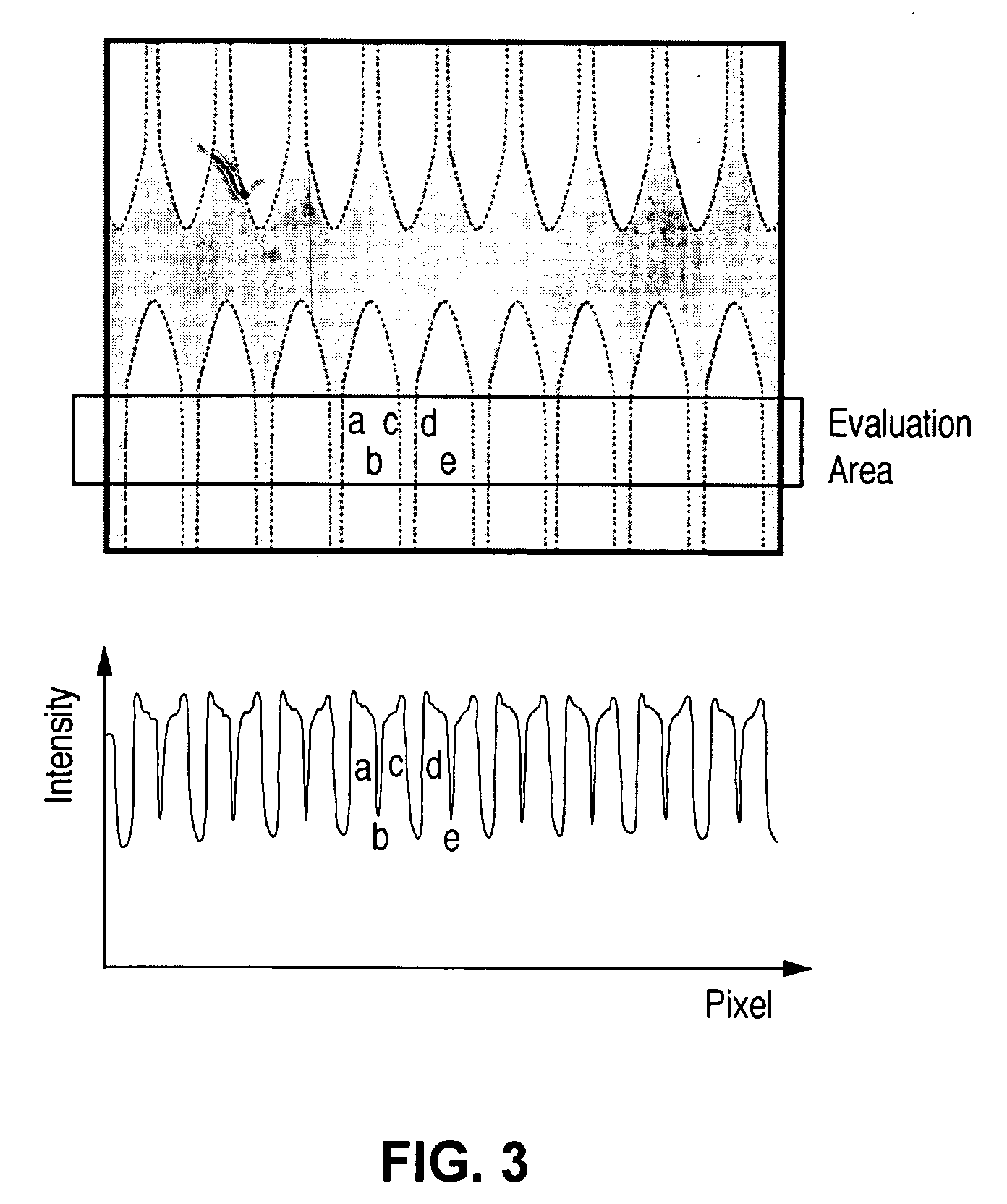Method and system for optical characterization of optical crystallization
- Summary
- Abstract
- Description
- Claims
- Application Information
AI Technical Summary
Benefits of technology
Problems solved by technology
Method used
Image
Examples
Embodiment Construction
[0024]FIG. 1 shows an image 1 of a partially sequential lateral solidification (SLS) treated silicon substrate 2 which has been acquired utilizing a color camera. The substrate 2 exhibits amorphous silicon in area 3 of the substrate 2. The substrate 2 further shows recrystallized substrate (all of what is not area 3) protrusion lines 4 and borders of the recrystallized substrate in which the substrate has been treated by an SLS process in a known way.
[0025]For quality purposes, it is important that the profile of the recrystallized substrate remains homogeneous over the full substrate area. That is, position and width of the protrusion lines 4 and the borders 5 should not change. Inhomogenities will lead to visible deviations of cell performance, e.g., in TFT displays, and, therefore, are not desirable. (The black bent line in the top left part of FIGS. 1-5 is a dust particle.)
[0026]FIG. 2 shows the red channel of the color image 1 of FIG. 1. The red channel of the image 1a contains...
PUM
 Login to View More
Login to View More Abstract
Description
Claims
Application Information
 Login to View More
Login to View More - R&D
- Intellectual Property
- Life Sciences
- Materials
- Tech Scout
- Unparalleled Data Quality
- Higher Quality Content
- 60% Fewer Hallucinations
Browse by: Latest US Patents, China's latest patents, Technical Efficacy Thesaurus, Application Domain, Technology Topic, Popular Technical Reports.
© 2025 PatSnap. All rights reserved.Legal|Privacy policy|Modern Slavery Act Transparency Statement|Sitemap|About US| Contact US: help@patsnap.com



